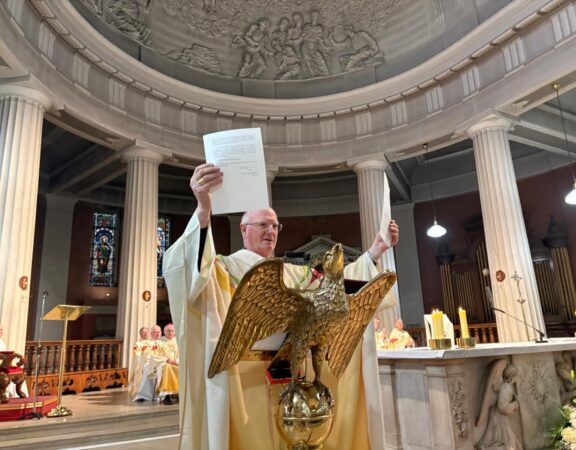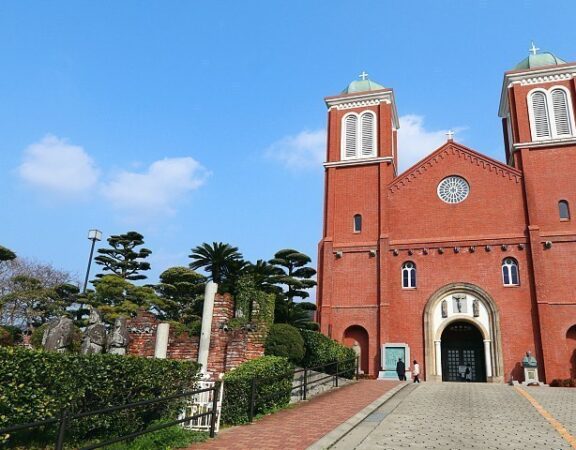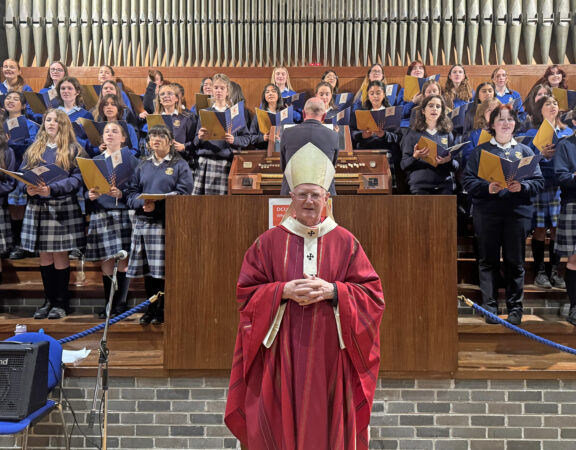BLESSING OF THE WHITTY WING OF THE MATER MISERICORDIAE UNIVERSITY
Speaking Notes of
Most Rev. Diarmuid Martin
Archbishop of Dublin
————————–
Mater Misericordiae University Hospital, Dublin, 28th February 2014
Why does the State in Ireland delegate a large sector of heath care provision to private bodies and voluntary organizations? Why is the Catholic Church involved in the field of state-funded health care today? Should the entire sector not be handled by the State itself? These are questions that we regularly hear asked in the media.
There is no country the world in which the entire public health service is managed exclusively by the State, except in totalitarian States and the results have generally been far less than successful. Every society needs a vibrant voluntary sector and civil society.
What should be the relationship between the State, its agencies and the voluntary sector? In the past, voluntary bodies, many of them religious in inspiration, were involved in the provision of educational and health care and social services because the State was not in a position to do so. Health care later became very expensive and voluntary hospitals could only survive with State funding. As times changed, the working relationship often did not change with the times. One public figure recently stated that the relationship between State and voluntary bodies in the health care sector were conducted on the principle of “a wink and a nod”. He did not say that you need two to wink and nod.
What is needed today and for tomorrow is a new model of cooperation between the State and the voluntary sector which allows the voluntary sector and civil society to flourish, albeit under transparent public control of expenditure and standards. We hear about bad management in the voluntary sector; but we also hear of poor oversight on the part of the agencies of the State.
The current controversies have damaged all voluntary and civil society organizations. Many have been unjustly tarnished by association, though mismanagement and lack of oversight on the part of a few. This is not helped by a culture of spin on the part of many who were responsible on both sides for the winking and nodding of the past.
We need a new model of cooperation and appreciation of each other’s roles Our health care system will not be reformed by sterile polemics. We find ourselves often in a situation in which those working in health care are faced a combination of increased numbers accessing the system, reduced funding and at the same time legitimate demands for ever higher standards. Reform of our current health care system is urgent, but the pace of reform is slow and complicated and the money does not seem to be there. We need vibrant public debate on the matter rather than polemics, or spin, or the hidden pressure of interest groups.
This afternoon we stand here in this spacious atrium with its hub of elevators and escalators leading to the varied activities and the goings and comings of one of Dublin’s most modern hospitals. It is a hospital which ticks all the boxes of modern jargon: “state of the art”, “best practice”, “medical excellence” and others.
We have come to celebrate a new step in the modern history of the Mater Misericordiae University Hospital, with the blessing of the new Whitty Wing. We celebrate also with an eye on the past and on the roots and the history of this hospital. What has that history to teach us? If I were asked why the Church should remain engaged in the public health sector and what are its credentials for doing so, I would answer with two words: Catherine McCauley.
Where did this hospital emerge from? What are its roots and origins? They come from the Christian idealism of a remarkable woman whose entire life was dedicated to seeing that the poor of Dublin, especially girls, would get proper access to education and health care. She formed around her a group of equally remarkable women who set out to turn an insight and a dream into a reality.
If I were to be asked today how I would evaluate the success or failure of our health care system, I would answer probably with the same answers that Catherine McCauley and her friends would have answered with in their time: what is the level of access of the poorest in our society to adequate health care? How long do they have to wait? What is the human experience for the poor in their interaction with services? What does health care cost in terms of the percentage of their earnings of a poorer person?
I would judge the quality of a modern hospital obviously by it being state of the art and reflecting medical excellence and being efficient. But I would judge it overall by the human experience of interaction with personnel who care and who take time and treat me as the person that I am in the entirety of my individuality. Technical excellence is vital but on its own it is not enough. Technology can even de-humanise. I remember an old hospital matron saying to me many years ago: “You cannot even light a blessed candle at the bedside of a dying patient today or you would blow the entire hospital up with all this machinery”. I think you can all understand what she meant. We need both: technology but we also need the simple signs of humanity which need neither words nor technology.
We all know the name Catherine McCauley. Fewer will have known the name of Mother Vincent Whitty. I was quite surprised when at the launch of the book “Caring for the Nation” here in the Mater, I almost apologetically asked if it would all right for me to bring with me a friend who was staying as my house guest at that time: the former Archbishop of Brisbane, Archbishop John Bathersby. I had no idea that he was to become almost the star of the day – except for Sister Eugene, the author of the book, as Mother Whitty was responsible for the building of 20 Convents of Mercy, including a Mater Hospital, in Queensland and she is buried in Brisbane. The name and the fame and the charism of the Dublin Mater have indeed spread to many parts of the world.
I like to feel when I come here like a past-pupil, since the last time I was hospitalised was here in the Mater in November 1963, as a young seminarian.
Without mentioning names, I am always amazed that when I tell doctors today when I was in the Mater and why I was there, they can almost immediately identify the doctor who cared for me. He was in his time a true Master in his field. While I will be eternally grateful to him for what he did for me, I also look on that doctor as an icon, as a symbol of a succession over the years of exceptional doctors in the Mater Hospital: true leaders and pioneers in their specialised field, great teachers and also genuinely caring men and women driven by a true sense of vocation of healing and of enhancing health and fullness. I am sure that the list of such exceptional men and women who have spent their lives in the Mater – doctors, nurses and other staff – would be a very long one indeed and one of which we can all be proud.
The Mater Hospital has indeed been connected with Archdiocese of Dublin over these years since its foundation. My predecessors from the time of Archbishop Daniel Murray have been true friends and supporters of this hospital. My prayer is that this Mater Misericordiae University Hospital will continue to be a landmark of care in this city of Dublin and further afield and that it will witness in changed times unscrupulously and unashamedly to the loving kindness of God revealed in Jesus Christ, and permit its faith -based origins to bring an added quality to all the work of healing and caring that takes place here, especially that hidden generosity and gratuitousness which must be the mark and the real contribution of the voluntary sector.







